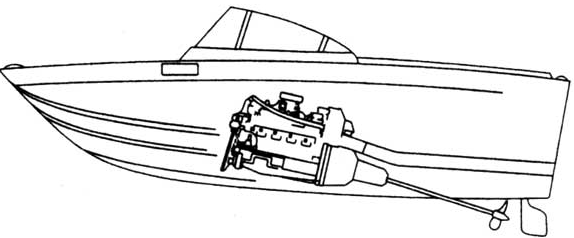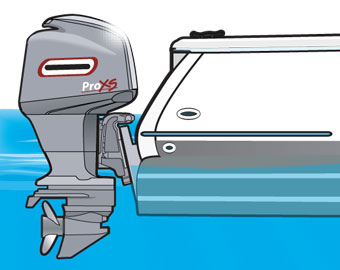
You should choose between an inboard and an outboard motor for your boat depending on your needs. Inboard motors provide superior stability and are ideally suited for offshore, commercial, and some specific water skiing applications. Outboard motors are more of a general purpose motor that offers convenient control, replacement, and maintenance. Your personal preferences may also influence your decision in choosing between inboards versus outboards.
Differentiating between Inboards and Outboards
Outboard engines are popular because their mounting position high upon on the transom ensures easy access. It is easy to tilt them completely out of the water when not in use. In terms of reliability and efficiency, many seasoned boaters prefer the outboard motor.
The inboard motors are mounted amidship and drive a propeller shaft that goes through the bottom of the hull. A good inboard system usually relies upon a separate rudder to facilitate steering. The inboard systems are more appropriate for heavy vessels that require large sized motors. For a small recreational boat, they are unwieldy, expensive, and more difficult to load.

Pros and Cons of an Inboard Engine
Inboards are usually diesel engines with lower running and maintenance costs and higher reliability. The weight of the inboard is low in the hull, which contributes as ballast for enhanced stability. Inboard does not compromise the boat’s aesthetic appearance because it stays out of sight. Sailboats with inboard engines usually have higher electrical power and advanced cruising equipment. Another benefit is that the prop is lower in the water, which reduces the chances of cavitating in steep waves and considerable water movement. In addition, an inboard engine is better for gas efficiency since it reduces drag (it is not protruding upward).
The disadvantage of inboards is that they are heavier and tend to slow down the boat. The engine is typically mounted in a tight space, which makes it more difficult to work on. Removing the engine for replacement or overhaul can be very costly, and may even require cutting through the fiberglass. The risk of water leaking into the boat may be slightly higher with an inboard engine. The basic cost of an inboard engine is considerably higher than an outboard of similar size.

Pros and Cons of an Outboard Engine
Outboards are more easily accessible for repairs and servicing. Removal for replacement is also much easier. It is usually possible to raise or till the motor to get the prop out of the water. This helps to reduce the drag while sailing. It is sometimes possible to improve the boat’s steering capability, depending on the engine’s mounting. The cost of an outboard is cheaper and there are minimal vibrations.
In terms of aesthetic appeal, many boat owners do not like an outboard. Its prop is not very deep in the water, which may result in cavitation when the stern rises up in steep waves. The gas tank may have to be positioned awkwardly, unless the boat is specifically designed to prevent this. An over sized outboard can pose a risk to the sailboat’s balance. Older outboard engines can sometimes be smoky and noisy.
Thank you to https://www.boat-ed.com for the image used in the article.



